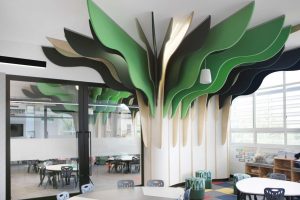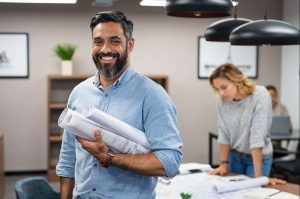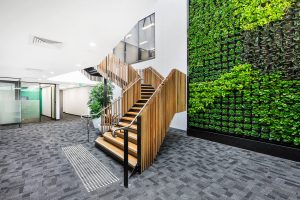Does an interior design need to do more than look good?
Mark Perry, Design Director
We’ve all been taught that beauty is only skin deep and that inner beauty should
be cherished. Sage advice but it raises a more important question. How?
When presented with designs for your new office fit out, you’ll be asked
to “take a look.” Once you’ve done that, you might be tempted to blurt out that classic quality-assurance killer, “looks good”. The frustrating
thing is that beautifully drawn schematics can be deceptive to the untrained eye, even if they don’t mean to be. Works in progress give the impression
that progress is being made, as you walk through a site inspection or swipe-right through the photographic evidence of … something. Even
at the handover, you’ll look around one more time while hovering over completion documentation, pen in hand and think yes, this certainly does have
a great “look”.
If looks could kill … a brand, they would
And they have. Many times.
Small but growing businesses have become growing concerns with growing workplace concerns, thanks to basic office design flaws. Large organisations
have had to grin and bear it or fork out for costly mid-lease refits when their original designs have not accounted for specific functional needs.
The result is more cost, a diminished culture and lost momentum.
So again, how do you know that what looks good or even great, actually works and will keep on working, before it’s too late to do anything about it? That’s
where design, real design skills that work, come into play.
And the one crucial function of design?
That’s easy. Problem solving. Does the design solve your problems? Good designers look at a space and work on ways to give it the right
look. Textures, colours, spatial elements are involved and it takes real skill to tie them all together for an aesthetically pleasing result.
But magazine shoot-ready offices may not “work” for many businesses and those that work in them.
I have always maintained that it’s far better to have a client say, “this absolutely works for us” than simply “this looks great to us but … .”
The latter response means the design team hasn’t done a good enough job of asking the right questions. Which, in turn, means the all-important
answers have eluded them and the project result will be adequate at best.
So how should a design team respond to common problems cited by clients which might include:
- Space – our team is expanding, we need more desks and another kitchen / we’re downsizing so maybe less of everything?
- Rebranding – our logo has changed and so have we. Funky, fun and the colour orange is where we’re at, soooo colourful carpet and beanbags?
- Functionality – we now need to do in-house pitches and presentations, can you put a conference room right over there?
“Yes” is the wrong answer
When clients broadly describe a problem but then hastily blurt out a possible solution, it’s inappropriate to simply say, “yes, we’ll do that for you.”
A better response would be, “tell me more. Let’s explore. What else really matters? What does your team look like when working
optimally?” Being able to ask the right questions leads to understanding the “why” behind the “what” – crucial to arriving at the best answer.
Arriving at the best answer allows us to provide the best solutions to all your design problems, not just the ones you can see right
away.
Sure, aesthetics are vital to properly representing your brand to clients and staff. But remember that a Maclaren F1 racing car with an old VW engine mounted
on the back is really just a pointy, one-seater Volkswagen bug … with a $2m price tag. So ensuring that the interior design actually improves workflow on a
number of levels, really should come as standard.
Functionality trumps aesthetics but we do both
Personally, I like to hear the whole story, understand the opportunities to make work life better, sketch some solution elements as we talk. Firstly,
understand the question, then arrive at some answers and finally ensure the solution looks great.
Interior design is a multidimensional “sudoku” and should be treated as such. Every choice has a knock-on effect and experience, curiosity, pragmatism
and imagination are key to unlocking functional, eye-catching designs that delight teams, impress clients and enhance brands.
That’s why there has to be more to design than meets the eye.




